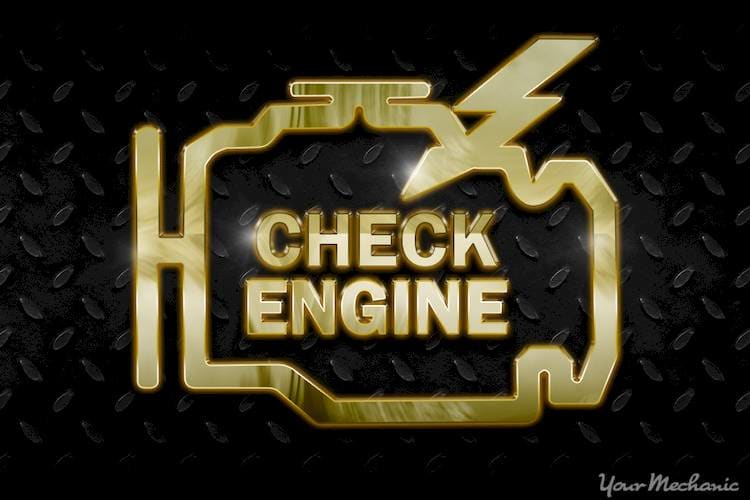P0447 code definition
A P0447 code indicates that there’s a component in the EVAP control system that is no longer functioning properly.
What the P0447 code means
The EVAP system is part of the vehicle’s emissions controls and includes the fuel cap, fuel lines, charcoal canister, purge valve, fuel pressure and flow sensors, electrical wiring, connectors, vacuum lines, fuel tank and vapor hoses, among other components. A P0447 code means that the powertrain control module (PCM) has detected a reading from an EVAP sensor that is not in compliance with manufacturer’s specs, resulting in a stored trouble code and illuminated malfunction indicator lamp (MIL).
What causes the P0447 code?
- Faulty or loose fuel cap
- Faulty purge control solenoid
- Charcoal canister clogged or broken
- Fuel vapor hoses cracked or broken
- Vacuum lines cracked or broken
- Faulty pressure sensor
- Faulty flow sensor
What are the symptoms of the P0447code?
Often, a P0447 code will result in no noticeable symptoms other than an illuminated MIL. A P0447 code will be enough to cause a vehicle to fail an emissions inspection, however.
How does a mechanic diagnose the P0447 code?
The evaporative emission control system (EVAP) captures fuel vapors that escape from the fuel tank and lines before they can make their way into the air. A charcoal storage reservoir, electrical solenoids and engine vacuum come into play to accomplish this. Flammable fuel vapors are trapped in the charcoal canister, which is supplied by plastic or metal hoses, and are then purged when the PCM enables the purge control solenoid.
When the engine is running, the purge control solenoid opens the purge control valve, allowing engine vacuum to draw fuel vapors back into the engine where they can be burned as fuel. On most vehicles the charcoal canister is located near the fuel tank, under the vehicle. The fuel vapor and vacuum lines are fairly long and are vulnerable to damage from road debris, age and the elements.
You will need a scanner/code reader, digital volt/ohmmeter (DVOM) and a smoke machine for diagnosis of this code.
- Begin by visually inspecting all wiring and connectors, and repair/replace any damaged, disconnected, shorted or corroded wiring, connectors or components as needed.
- If no problems with wiring or connectors are found, connect the code reader to the diagnostic connector. Record any stored codes and freeze frame data. Clear the codes and try operating the vehicle to see if codes return. NOTE: other EVAP/emissions codes often accompany P0447.
- Remove and reinstall the fuel cap, then test drive the vehicle to see if the code returns.
- If the fuel cap is good but the code returns, visually inspect the system’s vacuum and fuel vapor hoses for breakage, cracks, splits or kinks. Repair as needed.
- Inspect the charcoal canister and purge valve for any corrosion or damage. Replace any faulty parts as needed.
- With the engine running, listen closely for vacuum leaks near the purge control valve or hose from the purge valve to the intake manifold.
- Detecting vacuum leaks can be tricky. A smoke machine can be very helpful for tracking down leaks in the EVAP system’s complex network of hoses and fuel vapor lines.
- Place the vehicle on a lift, start the engine and observe from underneath. Listen closely to the purge control solenoid. When it starts to make a clicking noise, the purge valve should be open.
- Place the smoke machine’s nozzle close to the vacuum supply hose for the purge solenoid, filling the system with smoke. Watch all lines, hoses and system components for escaping smoke. Faulty gas caps are common – watch the area around the fuel cap closely.
- Remember that the charcoal canister’s vent will allow smoke to escape slowly – this is normal.
- Charcoal canisters can become contaminated with liquid, clogging them and restricting purge flow from the canister. With the purge control solenoid open, check for suction at both sides of the canister.
- If there’s no suction at the canister, the canister may well be the problem. Remove the canister and shake it as you listen for broken or loose particles or other rattles. Replace the canister if needed.
- If the canister seems to be working normally, check the fuel vapor hoses for kinks or crushed areas. If the canister and lines appear normal, test the purge control solenoid’s operation. The solenoid should operate as an on/off valve, as it completes a circuit that usually runs on battery voltage. Check manufacturer’s specs before applying voltage.
- If the solenoid is faulty, an EVAP control circuit code will also be present. If an EVAP control circuit code is present, inspect electrical connectors and wiring for damage or corrosion. Repair as needed.
- If wiring and connectors appear to be in good shape, unplug the connector from the PCM and perform a resistance check on the wiring, system pressure and flow sensors and purge control solenoid. Compare findings to manufacturer’s specs, repair as needed.
Common mistakes when diagnosing the P0447 code
Often, technicians replace EVAP system components when a vacuum leak or the fuel cap are at fault.
How serious is the P0447 code?
Problems leading to a P0447 code can mean failing an emissions test and adding hydrocarbon fumes to the atmosphere.
What repairs can fix the P0447 code?
Repair/replacement of:
In many cases, a P0447 code is stemming from problems with the charcoal canister. Working your way from the fuel cap and charcoal canister, then moving on to the rest of the system can be a good approach for this code.
Need help with a P0447 code?
YourMechanic offers certified mobile mechanics who will come to your home or office to diagnose and repair your vehicle. Get a quote and book an appointment online or speak to a service advisor at 1-800-701-6230.
OBD-II
trouble codes
P0447





